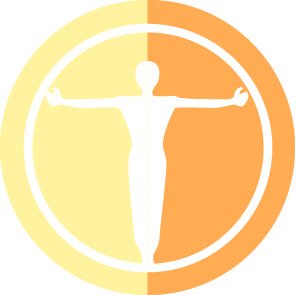There are similarities between acupuncture and dry needling. The same needles are used and the technique of inserting the needle matches. However, there are clear differences.
The biggest difference is the approach. Acupuncture is mainly viewed from an energetic concept. Dry needling is viewed from a physiological approach: a more mechanical concept.
In addition, classical acupuncture normally uses more than one needle in an area, which remain there for some time. Dry needling often works with one needle for the muscle that is treated. The treatment for each muscle is also very short.
Dry needling is particularly suitable for long existing muscle problem, specifically when myofascial (myogenic = muscle and fascia = connective tissue) trigger points are present. These trigger points can be seen as a painful hardening or muscle knot. Often trigger points cause not only localised pain but also pain elsewhere in the body.
The physiotherapist will identify trigger points as they can be the main cause of your symptoms. In addition to pain, a triggerpoint can also cause impaired movement, stiffness and reduced efficiency of the affected muscle. Sometimes, activating or deactivating a triggerpoint comes with reactions like sweating, dizziness, lightheadedness, blurred vision, or shivery cold hands.
Most of the patients with muscle problems can be treated with dry needling, but in some cases, dry needling is less suitable. In patients that have a fear of needles, are pregnant or have acute injuries, dry needling is not recommended.
In order to deactivate the trigger points, the physiotherapist inserts the needle. In this way, the muscle is forced to relax. There is minimal or no pain with the needle insertion. The treatment of the muscle is often accompanied by a sudden brief contraction of the muscle. This ‘twitch’ can be uncomfortable, but is of very short duration. Usually, an immediate positive effect is noticeable after. The muscle can be more flexible, Range of motion improves and / or there is a decrease in pain.
Sometimes you might feel warm or cold during the treatment or will perspire. Occasionally you may feel a bit dizzy.
After a treatment the treated muscles often feels tired and heavy. ‘muscle soreness’ is a common phenomenon. This is normal and usually goes away in a day. Sometimes some general fatigue occurs after treatment. Frequently, patients experience a deep sleep on the night after treatment.
During the first treatment, the physiotherapist will likely perform a slow and superficial treatment, This way he/she can see how you react before the intensity is built up if necessary.
All of our physiotherapists are certified and trained Dry Needling therapists by the Australian GEMt.


